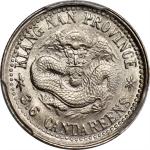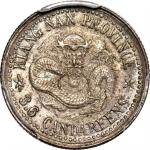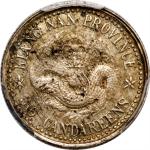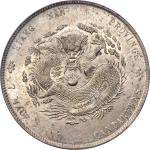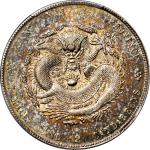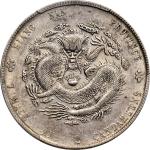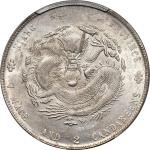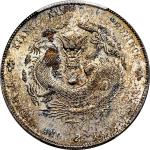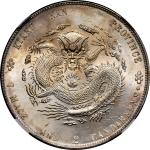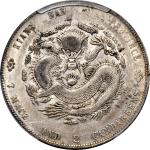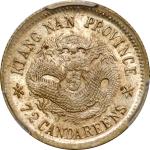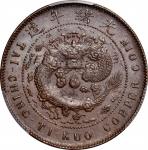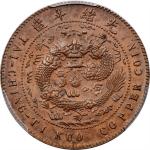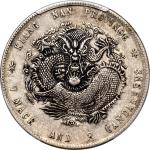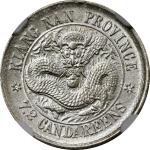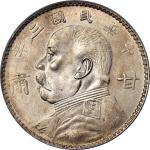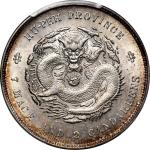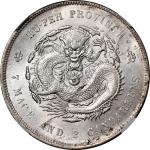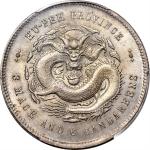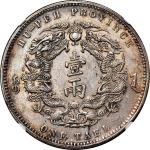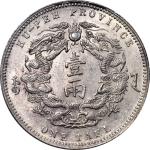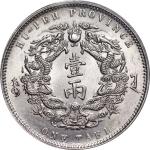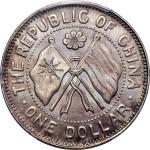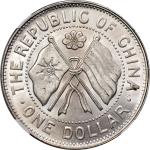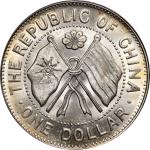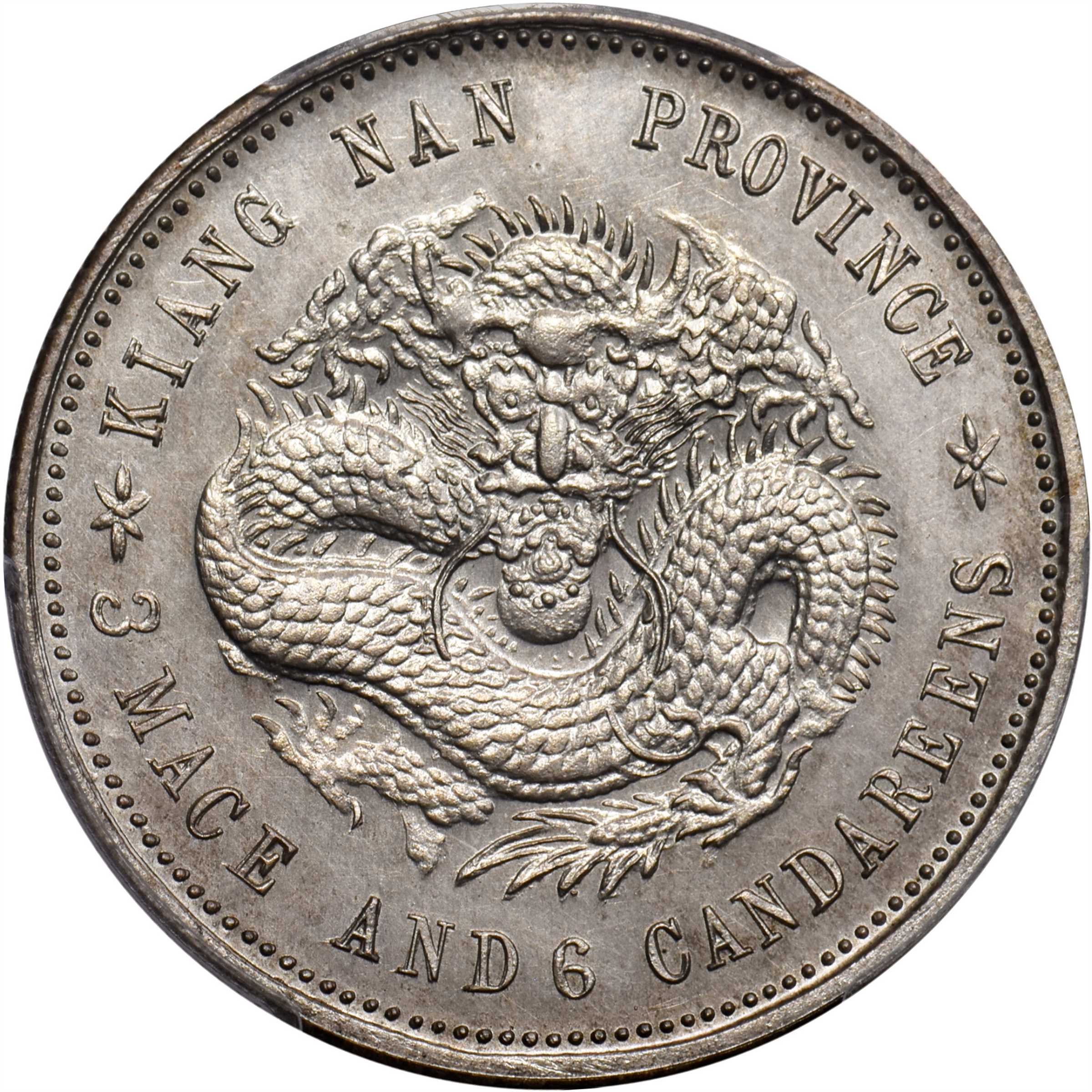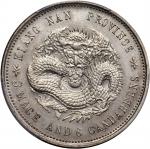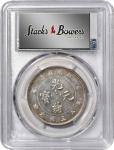USD 300000 - 600000
2022-05-04 13:00:00
2022-05-04 19:00:00
己亥江南省造光绪元宝三钱六分银币。 珍稀度, ☆☆☆。耿爱德书中叙述:“江南币中最稀少的一种,也是中国钱币内最珍罕的品种之一”。简而言之,耿爱德认為此币堪称中国2200年悠久发行史中其中一枚长青不朽的经典。PCGS 及 NGC 中仅四枚经评鑑,此枚的评分远优於另外三杖,仅仅 罕见 一词实不足以道出其稀缺性。 其餘三枚存世之作均曾经手,一枚 PCGS AU50、两枚 NGC 分别為AU 50 及 AU 细节评分。此枚荣获 PCGS MS-62+ 类精製币 (Prooflike) 的高评,细细品味其铸工,其实给予特殊精製 (Special Proof ) 亦不為过,状态首屈一指,无同版别可望其项背。钱币可见明显的模具抛光痕,较类近的江南发行多。底板带镜面感,与普制版的打铸截然不同。若隐若现的模具锈斑可能说明模具是在较后期被重用。反面有些轻微的磨擦,但与模具的抛光线完美融和。此枚明显从未流通,币面无任何接触痕跡,币缘刻划入微,与同时代的其他发行大相逕庭。细节纤毫毕现,此模具似经过多次的打铸,对於此為样币打铸的假说似是有所根据。 风范极致、版式稀少,不愧為资深藏家梦寐以求的藏品。歷来被奉為收藏进阶之关键品种,在包罗万象的钱币史中别树一格。本次亮相拍卖后,可能将成為资深集藏世代传承的珍品,是次机会可说是千载难逢。可遇不可求之作,翘楚高评,寥若晨星,我们深信拍场上将掀起激烈竞投。 <em>克劳斯书上列出此币未经证实的发行量為 155,此款 1899 年发行的三钱六分似是南京铸币厂财困的牺牲品。由於该面额普遍不受欢迎,1900 年被迫暂停运营,令1899 年的发行量极其有限。义和团事件运动后,银币的需求增加,南京造币厂於 1901 年在外国雕刻师 HA Holmes 的指导下重新开放,他姓名的首字母后来亦出现在江南的银币上。一份 1901 年的当代贸易报告称“早期不获批发行”的银币被熔化并铸造成新币,虽然不清楚这是否指的是 1900 年之前的铸币,但亦可以解释為何这一时期江南银币的存世数寥寥无几。</em>
CHINA. Kiangnan. 3 Mace 6 Candareens (50 Cents), CD (1899). Nanking Mint. Kuang-hsu (Guangxu). PCGS MS-62+ Prooflike. L&M-224; K-76; KM-Y-144a; WS-0809; Wenchao-657 (rarity: ★★★). Described by Kann as <em>...the scarcest of all Kiangnan coins and a rarity amongst all Chinese coins.</em> In this simple summation, Kann deals with one of the most desirable issues in the entire 2,200 year history of Chinese coins. With just four examples certified by PCGS and NGC, this far and away exceeding all others, and using the word RARE is to trivialize the uncommonness of this example. The three other examples known to exist have all been circulated, with a PCGS AU-50 along with two NGC examples: AU-50 and AU Details examples. Blowing away those examples, this piece has been graded MS-62+ Prooflike by PCGS, though it also certainly could have garnered a Specimen designation. Extensive evidence of die working is observed, far exceeding the amount normally seen on comparable types from Kiangnan. The fields are slightly mirrored in a way that is distinctive from almost all business strikes, and the faint evidence of die rust seems to suggest these dies were reused for this strike at a later date. Some light friction is seen on the character side, but this friction is perfectly blended with the die polishing. Obviously never circulated, this example displays no contact markings on the surfaces, and the rims are fully formed in a way unlike other examples from this time. Details are crisp and refined, and this example appears to be struck multiple times, further supporting the specimen striking hypothesis. With an example such as this, RARITY and beauty combine an intoxicating swirl to make this coin irresistible to the advanced collector. All comparisons fail when held against the light of this example, leaving it in a class unto its own. With this piece likely to disappear into an advanced numismatic cabinet for a generation, this lot provides the singular chance to acquire a prominent and regal example. This coin generates excitement that is among the loftiest of lofty, and we expect spirited competition as many bidders compete to get an example that is without peer. <em>With an unconfirmed reported mintage of 155 in Krause, it seems likely that the 3 Mace 6 Candareens issue for 1899 fell victim to financial problems of the Nanking Mint. Forced to suspend operations in 1900 and given the general unpopularity of the denomination, this likely severely limited mintage in 1899. After the Boxer Rebellion generated increased demand for silver coinage, the Nanking Mint reopened in 1901 under the direction of a foreign assayer, H.A. Holmes, whose initials would later appear on Kiangnan pieces. A contemporary trade report from 1901 accounts that silver issues from an earlier discredited issue were melted and struck into new coins, though it unclear if this refers to the pre-1900 coinage, though it would explain the somewhat low survival rates of Kiangnan silver pieces from this period. </em> From the Kairos Collection. Ex: W&B Capital Collection.

